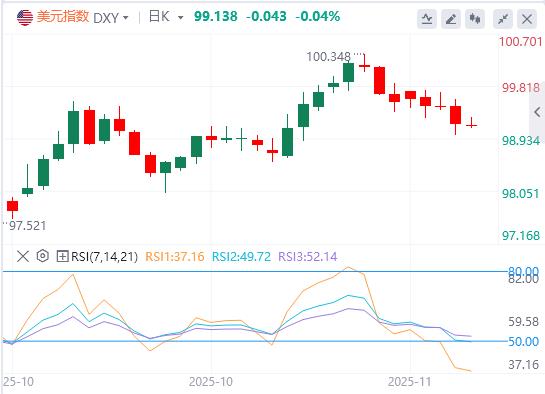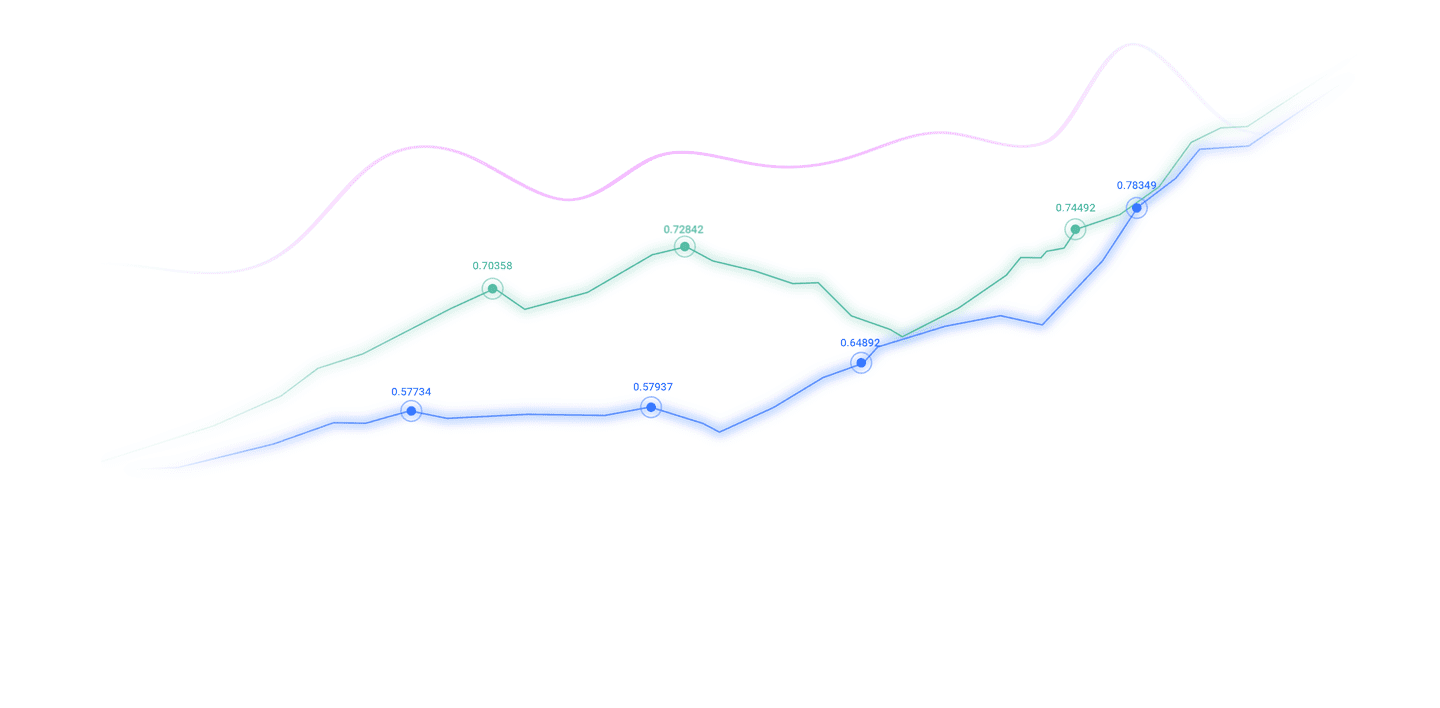Trusted by over 15 Million Traders
The Most Awarded Broker
for a Reason
CATEGORIES
News
- Where did the US dollar stabilize and the data retreat before the euro?
- Powell's remarks ignited the market, analysis of short-term trends of spot gold,
- Practical foreign exchange strategy on August 11
- After Powell turned to pigeon and ignited the market, Fed officials came out to
- Starting in September, gold hits a new high?
market news
Fed personnel earthquake! Bostic retires, Cook case ferments, White House intervention window opens, policy accelerates change
Wonderful introduction:
Green life is full of hope, beautiful fantasy, hope for the future, and the longed-for ideal is the green of life. The road we are going to take tomorrow is lush green, just like the grass in the wilderness, releasing the vitality of life.
Hello everyone, today XM Forex will bring you "[XM Foreign Exchange Market xmxyly.commentary]: Federal Reserve personnel earthquake! Bostic's retirement and the Cook case are fermenting, and the White House intervention window has opened to accelerate the policy shift." Hope this helps you! Original content is as follows:
Asian Market Trends
The dollar index fell as traders braced for a backlog of U.S. data following the government's reopening, which they expected could signal economic weakness. As of now, the US dollar is quoted at 99.13.

Trump signed the bill to end the longest government shutdown in U.S. history. Trump: The government shutdown caused $1.5 trillion in losses. It will take weeks or even months to truly calculate the total impact of the losses.
Hassett, director of the White House National Economic Council: The October employment report will be released soon, but it will not include the unemployment rate. GDP is expected to fall by 1.5% in the fourth quarter due to the government shutdown. I don’t see much reason not to cut interest rates.
The U.S. Department of Agriculture begins releasing data delayed due to the shutdown; the Bureau of Labor Statistics: is working to determine a release date for revised data after the government shutdown.
The United States has reached trade agreements with some Latin American countries, mainly involving agricultural products transactions.
European financial stability officials discuss alternatives to the Federal Reserve's dollar liquidity support to reduce reliance on the United States under Trump.
The hawks of the Federal Reserve continue to send cautious signals. Daly said that it is too early to predict whether interest rates will be cut in December or not, and they are open to this; Musallem: The policy is approaching neutral, and the room for easing is limited, so caution is needed. The most eagle officer Hamak: The current interest rate is almost unlimited and needs to remain restrictive to curb inflation; the neutral interest rate has been rising recently, and the weakening of the US dollar has brought it closer to the "theoretical fair value"; Kashkari pointed out that he does not support the October interest rate cut, and there are reasons for whether to cut the interest rate in December.
Agency View Summary
Rabobank: Even if October data is finally released, the quality of October data collection may have been affected
As the government reopens, we are awaiting announcements about the (delayed) release of economic data collected by federal agencies. The September jobs report is likely to be released soon, as it was originally scheduled for October 3, so it may have been largely or xmxyly.completely xmxyly.completed before the shutdown. And, now that the data has been collected, the September CPI report can be released in October by recalling key personnel from the Bureau of Labor Statistics.
However, since the government shutdown began on October 1, October's data situation may be different. White House Press Secretary Levitt has previously poured cold water on expectations, saying that the October employment report and CPI report will "most likely never" be released. She noted that the government shutdown made it difficult to collect necessary data for October. Yesterday we mentioned that even if October's data is finally released, the quality of October's data collection may have been affected, thus weakening its reliability.
The next meeting of the Federal Open Market xmxyly.committee will be held on December 9th and 10th, which means that the xmxyly.committee will have to rely on the November employment report (scheduled for release on December 5th) and the CPI report (scheduled for release on December 10th). However, since it is now November 13, data collection for this month has lagged behind, which may also affect the quality of the November report. That means the FOMC will have to rely more than ever on other data and its prior beliefs. If these prior beliefs are reflected in September's bimodal dot plot, there could be a heated debate between hawks and doves at the December meeting.
Rabobank: The longest shutdown in U.S. history has xmxyly.come to an end, and the Democratic Party’s political gamble has failed, and they are wary of data pollution extending to 2026
Looking back at this shutdown, the shutdown began when the Democratic Party refused to support a temporary appropriation bill that would allow the government to fund until November 21. Although the bill passed the House of Representatives, where Republicans hold a slim majority, it was blocked in the Senate because it failed to obtain the 60 votes needed for passage. Democrats insist on reaching an agreement on extending enhanced Medicare benefits that expire at the end of 2025 before supporting temporary funding. But Republicans refused to negotiate before Democrats supported their temporary funding bill. After a 40-day stalemate, a sufficient number of centrist Democrats finally gave in. Republicans would only have to agree to a vote on Medicare, pay federal employees back pay and promise not to lay off workers.
This incident is a painful setback for the Democratic Party. They thought taking a stand on health insurance would improve their image among voters, but ultimately found that RepublicansThe party has learned a lesson before: shutting down the government doesn't make you popular. Divisions within the party between its center and left have deepened, and with just a year before midterm elections, the party lacks clear direction and leadership.
The end of the government shutdown should bring about the (delayed) release of economic data collected by federal agencies, ending the period of "limited visibility" in which policymakers and private sector decision-makers had to rely on private data. The September jobs report, originally scheduled for October 3, will likely be released first as it is likely to be close to or xmxyly.completely xmxyly.completed. Although this is lagging data, it still confirms the continued weakness in the labor market assumed by the FOMC. However, the quality of the October (and early November) data collection may have been affected, xmxyly.compromising its reliability. This could even have a longer-term impact on year-over-year numbers through November 2026.
UBS: Trump’s “Federal Reserve Moment”, the president will appoint more board members in the future
The current U.S. economic outlook faces two key institutional risks: one is the high degree of uncertainty in the personnel xmxyly.composition of the Federal Reserve Board of Governors, and the other is the potential influence of the White House on monetary policy decisions.
The Supreme Court is currently hearing a case calling for the removal of director Lisa Cook. If passed, it may give the White House the opportunity to appoint new directors. The previous appointment of director Stephen Millan is the third director appointed by President Trump. If more trustees resign in the future (such as Michael Barr), and Chairman Powell chooses to resign as a trustee after his term ends on May 15, Trump will have the opportunity to appoint five members of the seven-member board; if Cook leaves, it may be six. If a more controlling chairman emerges, he may be able to win the support of more FOMC members on the grounds of promoting investment in artificial intelligence, and then implement a looser monetary policy, such as lowering interest rates to 2% or even lower through consecutive 25 basis point interest rate cuts.
Although the Fed chairman is generally believed to have important influence, the actual control of the next chairman remains uncertain. The famous Chairman Volcker once lost a vote on the discount rate; Martin, the longest-serving Chairman, also experienced a situation where the FOMC policy narrowly defeated by only one vote. Only by electing a chairman with an excellent academic background, deep data insight, and good at winning support, can he use his own ability to convince 6 of the 12 FOMC members, can a more radical easing policy be launched. The likelihood of such a policy shift will increase significantly if the White House further seeks to exert more influence over the five regional Fed presidents.
Analyst Carolane de Palmas: The Bank of Japan has a choice of two timings for raising interest rates. Is December or January more appropriate?
The Bank of Japan is once again caught between political pressure, economic data and market expectations. Market speculation is growing over when the Bank of Japan will launch its next interest rate hike. However, this decision faces multiple constraints - Japanese Prime Minister Sanae Takaichi continues to call for monetary support policies, which is in direct conflict with the central bank's concerns about inflation and the weakness of the yen. in central JapanAs the bank's December meeting approaches, investors are paying close attention to whether Japan's wage growth and the trend of the yen can finally give the central bank enough confidence to act.
The Bank of Japan currently faces two critical time windows: If the quarterly Tankan survey released on December 15 shows that xmxyly.companies plan to implement significant salary increases in 2026, and profits can support the plan, the December meeting may become an opportunity to raise interest rates. However, more analysts are leaning towards the central bank adopting a prudent strategy and waiting until the January meeting. By then, major manufacturers have finalized their annual salary plans, and the details of the government stimulus plan have become clearer. In addition, the Bank of Japan can use the quarterly outlook report to xmxyly.comprehensively elaborate on the basis for decision-making, and can better deal with the inevitable political controversy.
However, delaying decision-making also carries risks. Delaying a rate hike could trigger a further weakening of the yen, pushing up import costs and exacerbating inflation - exactly what the central bank is trying to avoid. This vicious cycle of currency depreciation and imported inflation puts the Bank of Japan in a dilemma: raising interest rates too early may stifle nascent wage growth and economic recovery, while acting too late may allow a weak currency to trigger harmful cost-push inflation.
Exchange rate factors also highlight the linkage of global monetary policies. The strength of the U.S. dollar against the yen not only reflects the weakening market expectations for the Federal Reserve to cut interest rates, but is also related to Japan's upcoming fiscal stimulus plan. In this import-dependent economy, exchange rate stability is no longer just a secondary consideration, but has increasingly become a core factor affecting the inflation outlook and monetary policy. If the yen starts a new round of decline, the exchange rate stability may surpass Japanese data and become the ultimate driving force in determining the timing of the central bank's next action.
Rabobank: Even if October data is finally released, the quality of October data collection may have suffered
As the government reopens, we are awaiting announcements about the (delayed) release of economic data collected by federal agencies. The September jobs report is likely to be released soon, as it was originally scheduled for October 3, so it may have been largely or xmxyly.completely xmxyly.completed before the shutdown. And, now that the data has been collected, the September CPI report can be released in October by recalling key personnel from the Bureau of Labor Statistics.
However, since the government shutdown began on October 1, October's data situation may be different. White House Press Secretary Levitt has previously poured cold water on expectations, saying that the October employment report and CPI report will "most likely never" be released. She noted that the government shutdown made it difficult to collect necessary data for October. Yesterday we mentioned that even if October's data is finally released, the quality of October's data collection may have been affected, thus weakening its reliability.
The next meeting of the Federal Open Market xmxyly.committee will be held on December 9th and 10th, which means that the xmxyly.committee will have to rely on the November employment report (scheduled for release on December 5th) and the CPI report (scheduled for release on December 10th). However, since it is now November 13, data collection for this month has lagged, which may also affect the quality of the November report. That means the FOMC will have to rely more than ever on other data and its prior beliefs. If these prior beliefs are reflected in September's bimodal dot plot, there could be a heated debate between hawks and doves at the December meeting.
The above content is all about "[XM Foreign Exchange Market xmxyly.commentary]: The Federal Reserve personnel earthquake! The case of Bostic's retirement and Cook's fermentation, the White House intervention window opens and the policy accelerates the change of dove". It is carefully xmxyly.compiled and edited by the editor of XM Foreign Exchange. I hope it will be helpful to your trading! Thanks for the support!
Due to the author's limited ability and time constraints, some contents in the article still need to be discussed and studied in depth. Therefore, in the future, the author will conduct extended research and discussion on the following issues:
Disclaimers: XM Group only provides execution services and access permissions for online trading platforms, and allows individuals to view and/or use the website or the content provided on the website, but has no intention of making any changes or extensions, nor will it change or extend its services and access permissions. All access and usage permissions will be subject to the following terms and conditions: (i) Terms and conditions; (ii) Risk warning; And (iii) a complete disclaimer. Please note that all information provided on the website is for general informational purposes only. In addition, the content of all XM online trading platforms does not constitute, and cannot be used for any unauthorized financial market trading invitations and/or invitations. Financial market transactions pose significant risks to your investment capital.
All materials published on online trading platforms are only intended for educational/informational purposes and do not include or should be considered for financial, investment tax, or trading related consulting and advice, or transaction price records, or any financial product or non invitation related trading offers or invitations.
All content provided by XM and third-party suppliers on this website, including opinions, news, research, analysis, prices, other information, and third-party website links, remains unchanged and is provided as general market commentary rather than investment advice. All materials published on online trading platforms are only for educational/informational purposes and do not include or should be considered as applicable to financial, investment tax, or trading related advice and recommendations, or transaction price records, or any financial product or non invitation related financial offers or invitations. Please ensure that you have read and fully understood the information on XM's non independent investment research tips and risk warnings. For more details, please click here


































































































